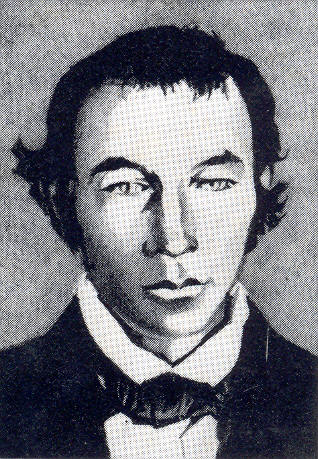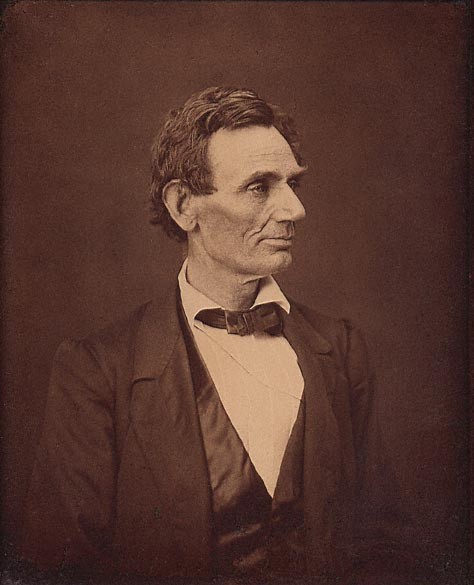CCLHP: Ashmore vs. Matson

Ashmore v. Matson
Artist rendering of what the Charleston Courthouse looked like circa 1847.
Courthouse Photo, was obtained from Shick, Nancy Easter., Douglas K. Meyer eds. Pictorial Landscape History of Charleston, Illinois. (Charleston, IL: Rardin Graphics, 1985), 25.
Matson v. Ashmore et. al. for the use of Bryant took place in October 1847. This case came about when a slave family, led by Anthony and Jane Bryant, fled from General Robert Matson's farm, which was affectionately known as Black Grove. General Matson was a landowner in both Kentucky and Illinois. When he came to Illinois to harvest his crops for the year, he usually brought a few slaves with him to accomplish the task. Upon this occasion, five slaves fled Robert Matson's farm. These slaves were taken in by Gideon Ashmore and Dr. Hiram Rutherford, two well-known and respected citizens of Coles County. Sources dealing with this case have charged that Rutherford and Ashmore were adamant abolitionists who were seeking to press the issue of slavery. Slavery, in their eyes, had been banned by the Illinois State Constitution, and had been outlawed by the Land Ordinance of 1785. According to these two men, Illinois had been, by law, a free state. These two were simply seeking to ensure that the state remained free of bondsmen.
This set the stage for the case to be brought to court. Each side believed their interpretation of Illinois and Federal slave laws were the accurate portrayal. This case was more than a fight over slavery. Slaves in the United States had been considered property, and not human beings. Matson charged that he was allowed to move his property anywhere he wanted. What makes this case even more fascinating is that Abraham Lincoln was retained by Mr. Matson to be his defense attorney.
Many historians have used this case to imply that Lincoln took the case because he believed in the slave owner's cause. Other historians have charged that Lincoln simply took the case because he had obligations to his client to do so. Either way, this page will not attempt to define Abraham Lincoln's reasons for getting involved. Instead, our institution has sought to present the facts of the case for educational purposes.
In a very real way, this case represents more than just slavery or the involvement of Abraham Lincoln. This case brings to light the real discussions about property ownership, and the limits American society had adopted to protect those interests. Since slaves were considered to be chattel, they were not entitled to the same rights as other citizens, and this is why Dr. Rutherford and Mr. Ashmore decided to harbor the slaves. They knew that Matson would have to sue them to regain the slaves he had lost. In suing, Mr. Matson hoped to establish that farmers who owned property in different states were allowed to retain their right without state intervention. He wanted the state to recognize federal protection offered to those whom transported property across state lines. Matson was only intent on keeping his slaves in Illinois for a short time. Ashmore and Rutherford charged that the laws of Illinois stipulated that slaves were freed upon entrance into a free territory. In the end, the argument of Ashmore and Matson ended up winning the case.
The law was forced to interpret the rights and practices slave owners enjoyed within Illinois. This case challenged the pre-existing interpretations of property ownership by calling into question the reliability of those laws. The plaintiff asserted that slavery was to be allowed as long as they only remained in free territory for a short time. In this argument Lincoln, invoked the right of transit, allowing slaveholders to take their slaves temporarily into free territory. The defendants cited that slavery could not be shown preferential treatment. Ashmore and Rutherford wanted to establish the banishment of slavery from the state was not subject to debates about property. Instead, all slaves entering the state lost their distinction of being property.
By examining this case it is easy to see why the system of slavery presented real challenges to American society. This case is the most interesting case of Coles County history because the substance and the characters made for a stellar trial. In the end, this case represents debates about property, slavery, and character as no other has in the history of the County.
This portrait was taken by Alexander Hesler before the presidential election of 1860. The picture is a good representation of what Lincoln would have looked at the time of the Ashmore for the use of Brant et. al. v. Matson court case of October 1847.
Reference: Charles Hamilton and Lloyd Ostendorf: Lincoln in Photographs (1985)
Lincoln Slave Case
-
Benner, Martha L., and Cullom Davis eds. The Law Practice of Abraham Lincoln [computer file]: Complete Documentary Edition.
-
This program is available on CD Rom and contains many of the known legal cases worked on by Abraham Lincoln. The program is understandable and gives the user multiple ways to search for information. Also, the program provides scanned copies of many of the documents that were filed with any given case.
-
In the case Matson for the Use of Coles County, Illinois v. Rutherford, Robert Matson (Mateson) (plaintiff) sued Hiram Rutherford (defendant) for harboring five slaves. The court listed the fine for hiring slaves at $500 per person. Matson retained the services of Lincoln. The court ended up dismissing the case. The documentation available from this case is; bond for costs, declaration, two letters, order, and execution docket.
-
-
Ralph G. Newman, Lincoln Legal Briefs, July-September 1998, no. 47, Ashmore for use of Bryant et al. v. Matson (Coles County Circuit Court, October 1847).
-
This site provides summaries of what it believes the top ten Lincoln legal cases. The case summary listed here is the same case as listed above on the CD Rom, except the name of the case is given in a different format.

Dr. Hiram Rutherford, abolitionist and participant of the Ashmore for use of Brant et. al. v. Matson case.
Henrick, Willene,. George Hendrick eds. On the Illinois Frontier: Dr. Hiram Rutherford, 1840-1848. Carbondale, IL: Southern Illinois University Press, 1981.
-









